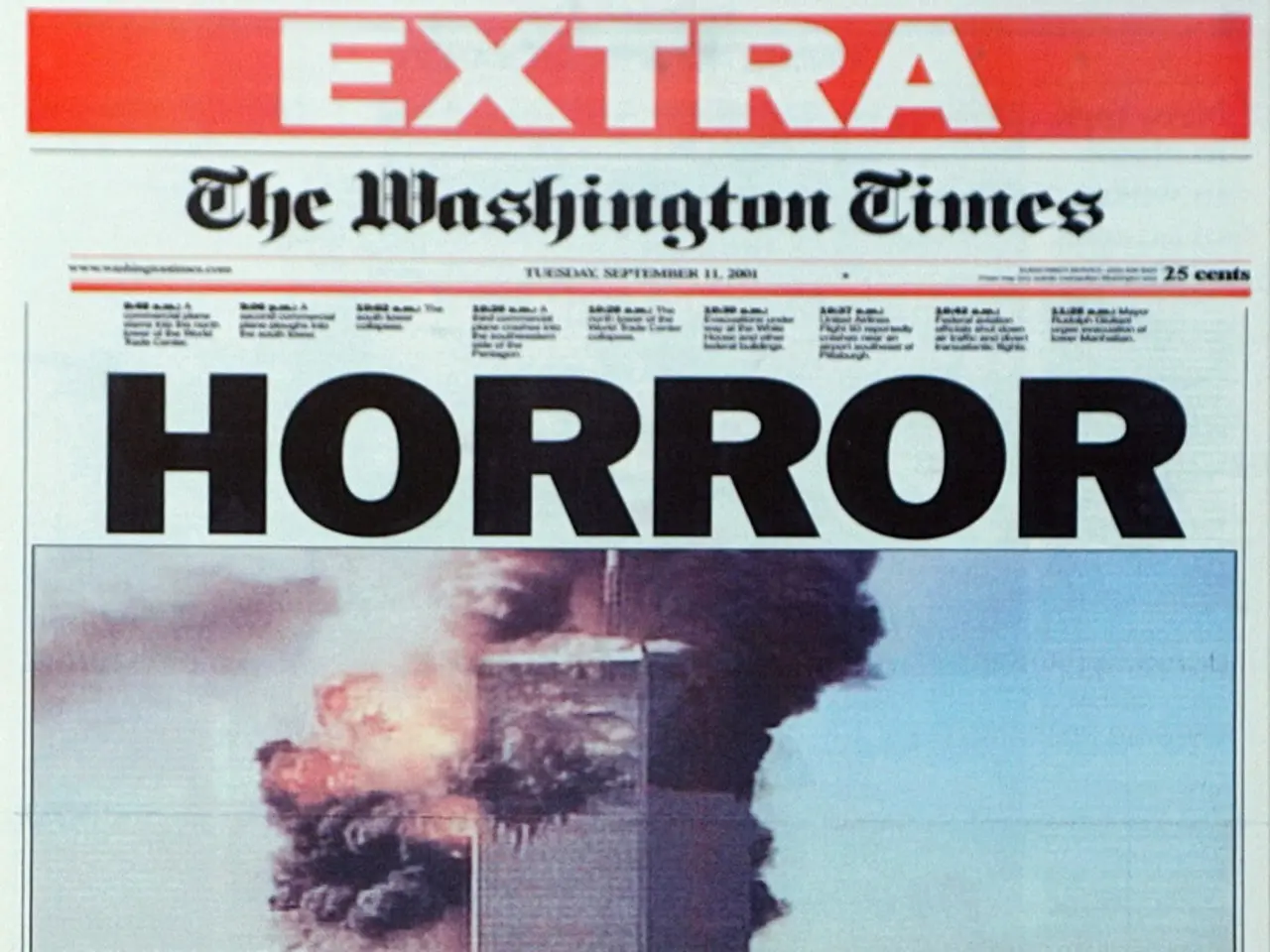Trump set for a rendezvous with Putin
In a highly anticipated meeting, US President Donald Trump and Russian leader Vladimir Putin convened in Alaska on Friday to discuss the ongoing conflict in Ukraine. The remote location of the summit, geographically close to Russia, provided a secure environment for the talks but failed to produce a breakthrough ceasefire agreement or significant progress [1][2].
The main focus of the discussions was a potential peace agreement in Ukraine, with international borders not to be changed by force, according to a joint statement by Germany, France, Italy, Poland, the UK, Finland, and the EU Commission ahead of the summit [4]. However, the talks concluded without a concrete agreement, as Russia continued its military operations during the negotiations [1][2].
Ukrainian President Volodymyr Zelensky had insisted on Ukraine's involvement in the negotiations, but his participation was rejected by Putin [2]. Despite Ukraine's absence from the direct talks, the country remains the central subject of negotiation, with its sovereignty and security at stake. Experts emphasize that without real concessions from Russia, any US-led peace process lacks real leverage [2].
The US President held some leverage over Ukraine, including the possibility of a complete halt to military support, as seen briefly in March. Trump also threatened to impose sanctions on major Russian trading partners if a ceasefire was not achieved within a 10-day period [5]. The US could also stop providing intelligence data to Ukraine, effectively blinding the Ukrainian army, making the continuation of the war increasingly challenging [5].
Ukrainian President Zelensky has categorically rejected any abandonment of Crimea and the territories of Luhansk, Donetsk, Saporischschja, and Cherson, which are partly controlled by Moscow [6]. Russia, on the other hand, is interested in economic ties with the US and wants to discuss strategic security with Trump, including nuclear arms control [7].
The summit was the first meeting between Trump and Putin in over four years. Alaska, previously part of the Russian Empire before being purchased by the United States in the mid-19th century, served as a neutral and secure location for the talks [8]. The exact location and time of the meeting remained unclear throughout the negotiations [1].
Trump has positioned himself as a mediator for a peaceful solution since the beginning of his second term in January 2025. However, he has not imposed further sanctions on any countries in the context of the Ukraine war since setting a 10-day deadline for a ceasefire between Moscow and Kiev in July [9].
The tariffs Trump threatened to impose on India for its oil dealings with Moscow are set to take effect on August 27th [10]. Additionally, any implementation of a solution to the territorial questions would require significant changes to Ukraine's constitution, which is not allowed during wartime and requires a two-thirds majority in parliament, the Verkhovna Rada, as well as approval from the Constitutional Court [11].
Putin does not have to worry about an arrest warrant from the International Criminal Court in Alaska, as both the USA and Russia do not recognize the institution [12]. The Bering Strait separates Alaska from Russian territory [13]. Russia has demanded that Ukraine give up its bid to join NATO and cede the territories it annexed in 2014 in exchange for a peaceful resolution to the conflict [14].
In summary, the Alaska summit did not alter the trajectory of the conflict: no ceasefire was achieved, Russia’s war on Ukraine continues, and Ukraine’s role remains indirect as the primary issue but not a direct participant in the US-Russian dialogue [1][2][3]. The stalemate in the negotiations raises concerns about the future of peace in Ukraine and the potential for continued conflict.
The discussions between Trump and Putin in Alaska, concluded without a concrete agreement, as Russian military operations continued during the negotiations. Regardless of Ukraine's absence from the direct talks, the country remains the cental subject of negotiation, with its sovereignty and security at stake.
Without real concessions from Russia, any US-led peace process lacks real leverage. Despite Ukrainian President Zelensky's insistence on Ukraine's involvement and categorical rejection of abandoning Crimea and contested territories, Ukraine's role remains indirect in the US-Russian dialogue.








